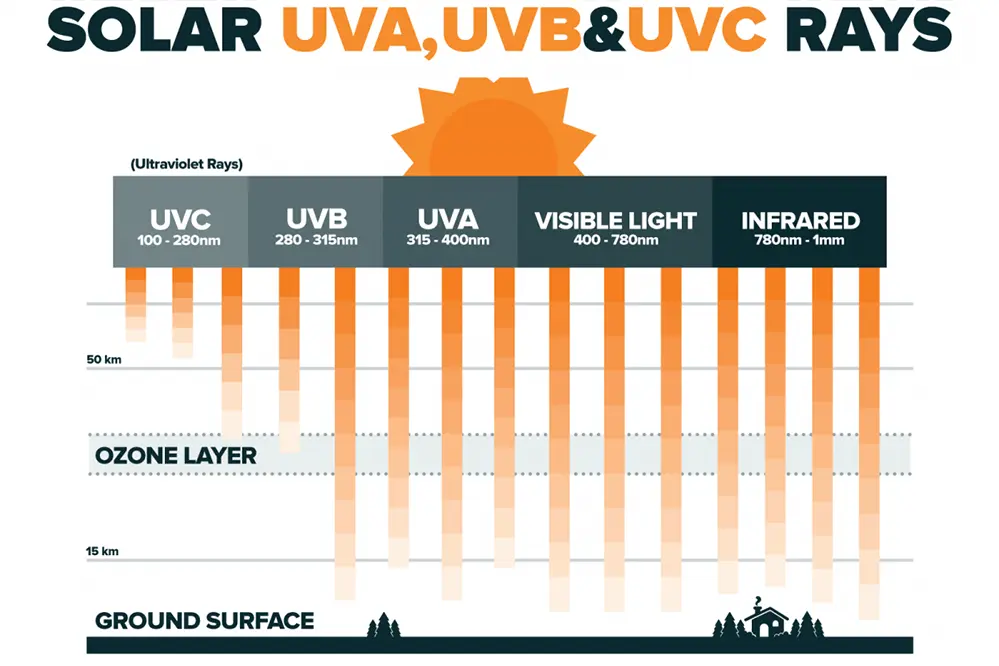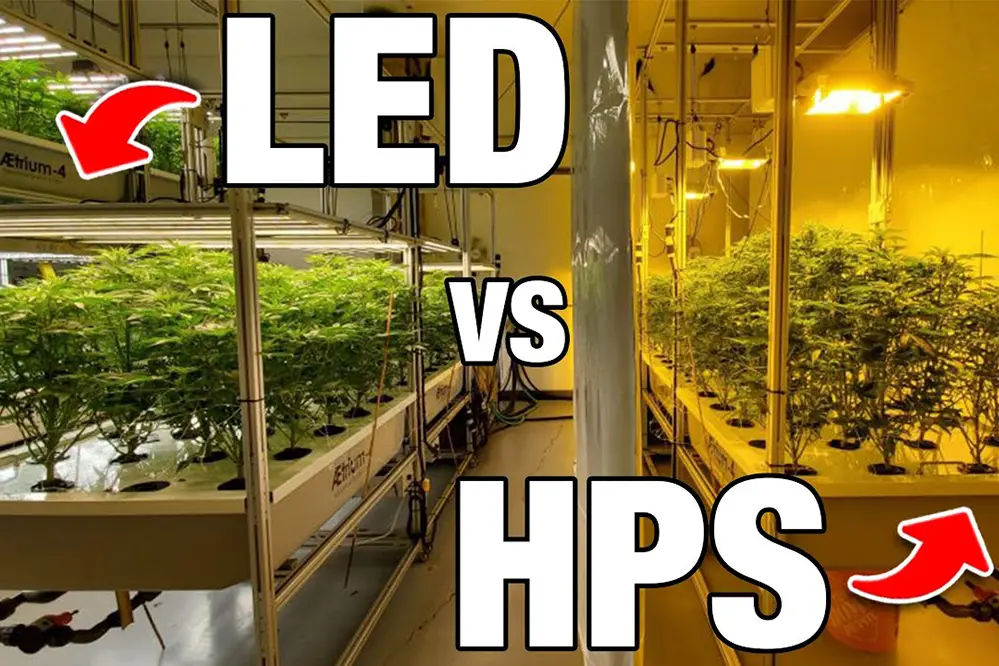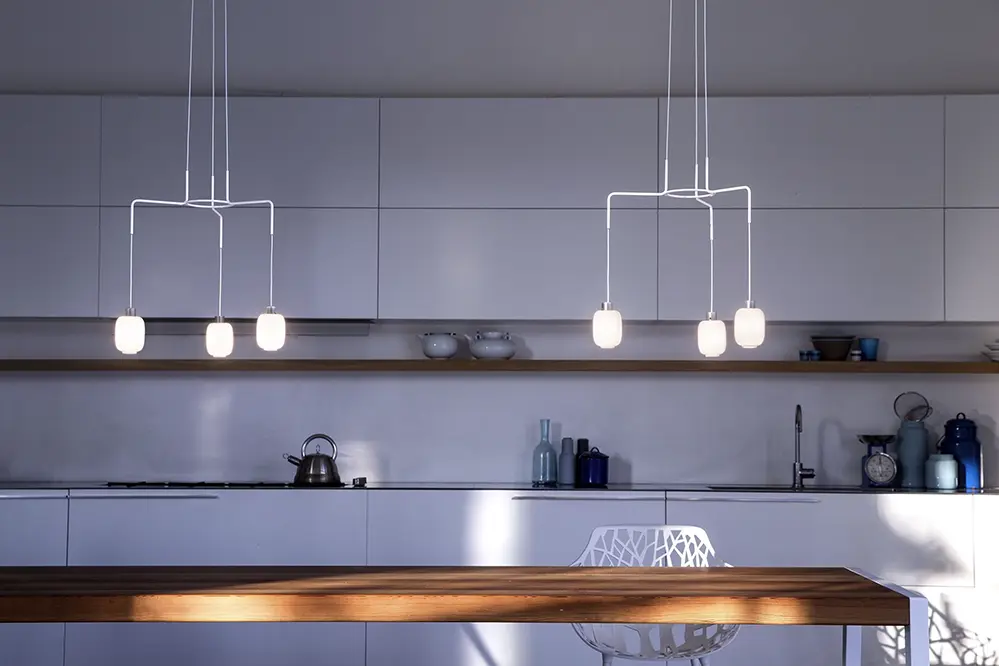Picture this: you’re hosting a dinner party, and just as the evening begins, your LED lights start flickering. This common issue often points to the need for a new LED driver, and understanding the signs it’s time to replace your dimmable LED driver can save you from such embarrassing moments.
Addressing this problem is crucial, as a faulty driver can lead to increased energy consumption and reduced bulb lifespan. Fortunately, there are clear indicators and solutions to ensure your lighting remains reliable.
In this article, we’ll delve into these warning signs and offer practical advice to keep your lighting system in peak condition. Prepare to uncover the secrets to maintaining a flawless lighting experience.
Flickering Lights
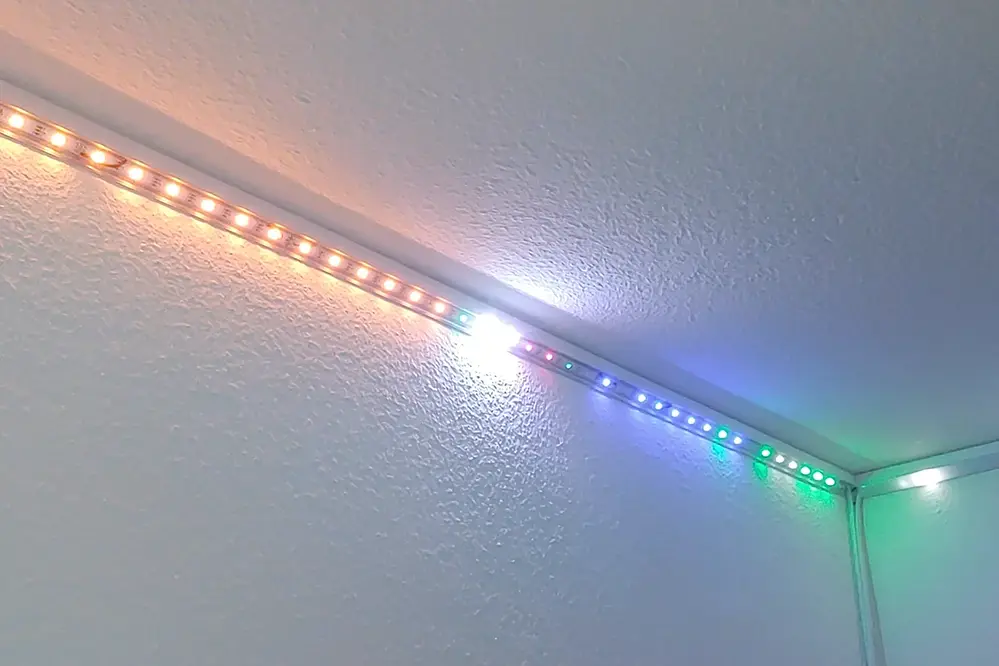
A flickering light can instantly shift the mood, turning an inviting space into one that’s unsettling and disruptive.
When lights begin flickering, it’s often an underlying warning sign related to your dimmable LED driver or issues with the input voltage. This anomaly could be caused by an inconsistent power supply or a driver struggling to maintain its output voltage, signaling a potential need for replacement. Ensuring your lighting system operates smoothly enhances not only aesthetics but also your overall well-being.
Prolonged flickering may result from a mismatch between the driver and the LED lights. In complex lighting systems, replacing the driver can swiftly rectify these mismatches, enhancing the synergy between your LEDs and their driver.
Therefore, if persistent flickering forces you to question the reliability of your lighting, it may be prudent to reassess your LED driver’s performance. Proactively addressing this issue can usher in a more harmonious lighting experience, fostering environments that inspire and uplift. Remember, the integrity of your illumination significantly impacts the vitality of your space and productivity.
Inconsistent Brightness Levels
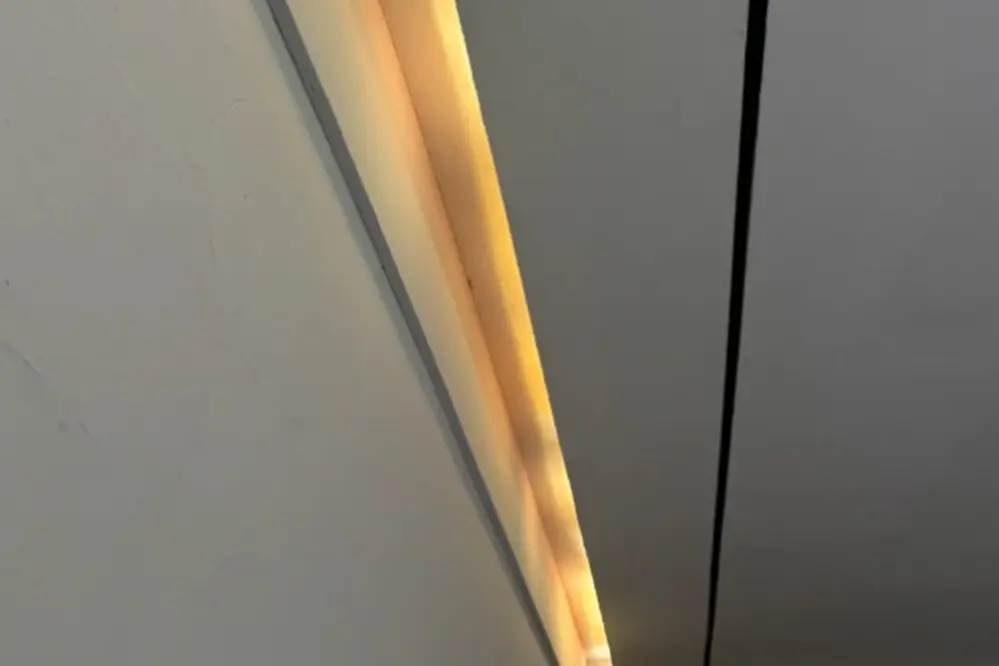
Experiencing fluctuating brightness from your lighting fixtures might compromise the ambiance and functionality of your space.
In 2016, studies highlighted, a consistent lighting environment boosts productivity, whereas unstable illumination can strain eyes and cause headaches, impacting your overall experience and well-being.
Now, it’s not just about how your space looks—it’s essential to consider the pivotal role of your lighting system in maintaining consistent brightness and reducing stress during critical tasks.
Examine the connection to your driver, because any lapse in this crucial link isn’t just the flicker of the 3 AM bulb; it’s about ensuring reliable performance, and smooth technological advancement that enhances your day-to-day activities.
Inconsistencies could stem from overdriving or a weakened driver struggling to sustain power, signaling the need for an upgrade.
Delayed or No Response
Picture this: you’re flipping a switch, but your lighting doesn’t immediately respond or, worse, doesn’t react at all.
This scenario, while seemingly inconsequential, can be a significant overhead, disrupting your productivity and peace of mind. Dimmable LED drivers, much like other pivotal components, should seamlessly translate your inputs into visible results—a thing of beauty when they work as they should but exasperating when they falter.
Unfortunately, these delays or complete non-responses can indicate a deeper issue. As technology integrates further into our daily lives, the harmony of prompt responses becomes critical for maintaining a controlled environment and ensuring that your systems respond to your demands with precision.
The good news is that staying proactive about updating your technology can transform these disruptions into opportunities for improvement. Empower yourself by acknowledging these signs, and equip your space with cutting-edge solutions that redefine your lighting experience, jumpstarting a brighter, more productive chapter.
Dimming Function Failure
When the smooth transition of light intensity falters, it’s a compelling reminder that your dimmable LED driver may need attention, and perhaps even replacement.
This is one of the more frustrating experiences, as dimming should be seamless.
If you notice drastic shifts in brightness levels without consistency, it’s indicative of a malfunction that signifies the need for a new device to ensure stable, predictable, and rewarding illumination experiences.
An effective dimming system should respond to your touch like a trusted partner in ambiance, adeptly guiding the mood of your environment. If it begins to “shiver” or flicker unpredictably, this distraction calls for decisive action, beckoning you to embrace updated technology that facilitates the finesse you deserve without reservation.
Overheating Issues
If your LED driver regularly emits excessive heat, it’s a pressing indicator of internal complications.
Overheating can drastically shorten the lifespan of your driver, undermining its performance and efficiency. In 2016, Stanford University, a leading research institution, reported how overheating can cause LEDs to flicker or fail prematurely. The heat stresses the components, accelerating their degradation and potentially leading to burnout.
Perhaps, it’s not too farfetched to liken the driver’s overheating to a chronic fever that erodes the vitality of your lighting array. It silently siphons energy, driving up costs while dampening productivity—a tête-à-tête with inefficiency.
Regular checks on the temperature can reveal if your driver is teetering into an unsafe zone. Ensuring adequate ventilation, straightforward installations, and selecting drivers rated for their intended purpose are proactive measures against this unnecessary heat surge.
Addressing overheating is a decisive stride toward enhancing longevity and reliability, transforming potential failure into sustained brilliance.
Buzzing or Humming Noises
Are your dimmable LED drivers emitting sounds reminiscent of buzzing bees or low humming engines?
Recent years, engineers worldwide have sought solutions to these unsettling noises, which often arise from electrical or mechanical irregularities within LED drivers. It’s not just an annoying disturbance; this sound might be a herald of underlying issues. Such noises can indicate faulty components or improper installation, both of which can jeopardize the efficiency of your lighting system.
While a mild hum might seem benign, it’s crucial not to dismiss its potential implications. As efficiency champions in our industrial and residential sectors recognize, consistent noise can expedite wear and tear, leading to premature driver failure. Early detection of these sounds could be your first assertive step toward preemptive maintenance, ensuring uninterrupted illumination and operational efficiency.
If the buzzing intensifies, or if new noises develop, consider it a clarion call to action. Replacing or repairing your LED driver might be more cost-effective and sustainable than enduring the consequences of protracted malfunction. Trust in this proactive approach to harmonize your audio and lighting environments.
Silence is golden, especially when it signifies the optimal performance of your LED drivers.
Discoloration or Yellowing
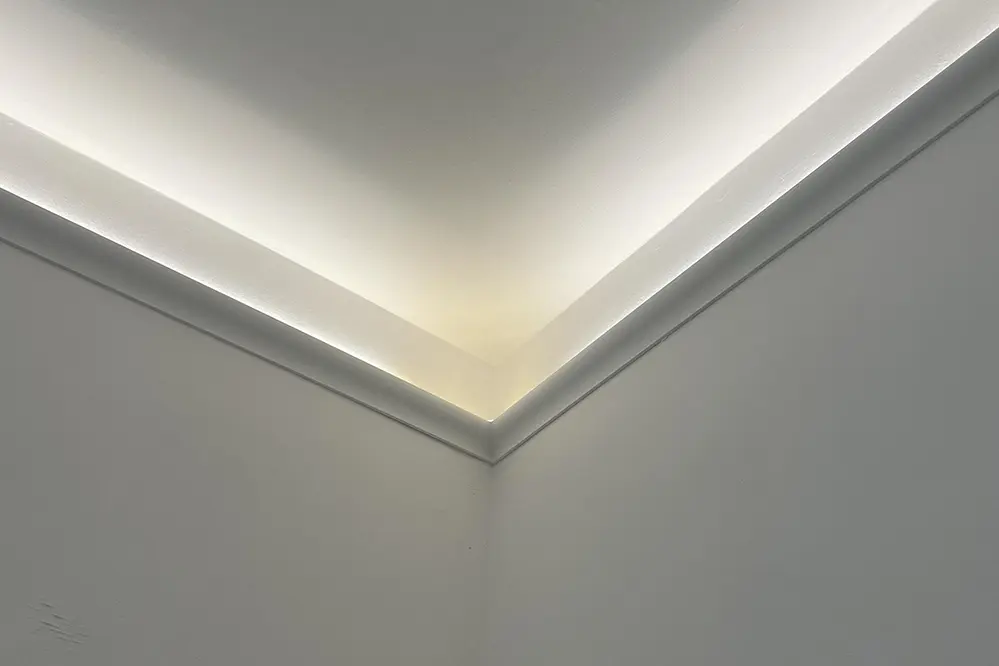
In the vast spectrum of LED lighting issues, visual cues like discoloration or yellowing, serve as a crucial indicator of a dimmable LED driver beginning to falter.
Noticeable changes often suggest that the internal components are degrading, which can affect overall efficiency.
Typically, discoloration points toward overheating problems, highlighting an urgent need for investigation and resolution.
Addressing these issues swiftly is paramount to preventing further damage and ensuring longevity and performance.
Ignoring these signs could lead to compromised illumination quality, ultimately resulting in larger, costlier interventions if not addressed promptly.
Indeed, the best time to address what’s right in front of your eyes is now. Proactive maintenance ensures your lighting system remains vibrant and dependable.
Reduced Light Output
Diminished brilliance is not just a cosmetic concern; it heralds potential inefficiencies within the dimmable LED driver system. When the lights dim unexpectedly, it’s an urgent cue for careful examination.
Such behavior may quickly disrupt environments relying on consistent illumination.
This issue might be linked to an aging driver grappling with delivering the correct power levels. With each passing moment, the deviation from desired intensity can lead to shadows of doubt affecting productivity, ambiance, and perhaps even morale.
For those who aspire to brilliance and efficiency every moment, addressing reduced light without delay is indispensable. By embracing this necessary transition, you unlock the potential to once again bask in consistent brilliance, ensuring your lighting system stands unwavering against the march of time. Do not shy away from the change; instead, let it be the beacon guiding you to a luminous future.
Sudden Light Shutdowns
Imagine settling into your evening, anticipating the comfort of your home’s inviting glow, only to have darkness suddenly envelop the room. Such abrupt light shutdowns can risk your safety, not to mention disrupt your peace.
Unpredictable light failures often indicate a problem possibly linked to your dimmable LED driver.
These shutdowns are symptomatic of potential internal conflicts, possibly due to a mismatch in input voltage needs causing circuits to trip. In aligning your system correctly, you renew stability, energy, and efficiency to every lighted moment.
The value of reliable illumination cannot be overstated as it plays a vital role in creating an atmosphere of confidence and security. Addressing sudden light shutdowns is a stepping stone to a more consistent and empowering lighting experience, as well as an opportunity to ensure the longevity and efficacy of your investment. Take the initiative to illuminate both your spaces and your path forward, fostering an environment where light commands reliability and inspiration.
Frequent Driver Resets
Imagine settling into an evening of relaxation, only to have your lights flicker incessantly, interrupting the ambiance. Such frequent resets of your LED driver not only disrupt your environment but also signal underlying issues.
Significantly, these reboots point to the driver struggling to maintain a stable connection, essential for seamless operation.
Particularly, the driver resets signal problems with voltage regulation, causing the lights to flicker unpredictably (indicating a need for immediate attention).
These challenges stem from whether a fluctuating power source or aging components incapable of handling consistent electrical flow. Addressing these issues blossoms into a smoother and more reliable lighting experience, restoring the ambiance you desire.
Frequent resets can be particularly frustrating, jeopardizing the efficiency of your lighting system and demanding more attention than they should. Prioritizing these matters is a proactive step toward ensuring your lighting remains as reliable as it is radiant.
Ultimately, the goal is to adopt solutions that guarantee your lights’ peak performance. Swift intervention ensures these resets become a story of the past, heralding a future aglow with unwavering light.
Physical Damage to Driver
When delving into the physical integrity of your dimmable LED driver, visual assessments can offer insight into the device’s health and functionality. Cracks, dents, or any pronounced abnormalities are immediate indicators warranting closer examination.
Such irregularities point to the potential malfunction risks that could hinder lighting performance. It is imperative not to overlook these cues.
Physical damage often results from environmental stressors, such as overheating or impact, which compromise (and potentially accelerate) the driver’s degradation.
Inspecting the driver for heat-related discoloration is essential. Proper ventilation ensures longevity, preventing issues like warping or melting.
Moreover, damage often arises from installation mishaps or mishandling, stressing why following installation guidelines and best practices is critical for sustained function.
Finally, signs of physical wear aren’t just cosmetic; they can signal profound issues. Regular inspections, emphasizing physical condition, keep your lighting systems vivid and secure.
LED Compatibility Problems
Are your lights flickering? This could be why.
One common issue that may arise is LED compatibility issues. The mismatch between the driver and the LED is a prevalent problem, leading to erratic lighting behavior, making it nearly impossible to achieve optimal efficiency. Consequently, identifying if this is the case requires understanding the driver’s specifications and verifying that they are compatible with the LED systems you are using.
The absence of compatibility can disrupt your lighting.
Harmony between the two is critical—if you notice irregularities like flickering or reduced brightness, it could mean your driver isn’t sending consistent voltage or constant current levels compatible with the LEDs, thus causing disruption.
To stay ahead of these potential pitfalls, equip yourself with knowledge about evolving compatibility standards, especially as the technology landscape in 2023 and beyond continues to change. This proactive approach ensures that your lighting systems remain reliable and efficient, supporting the broader transition to smarter, more sustainable illumination solutions.
Increased Energy Consumption
A spike in energy bills raises concerns.
If your utility costs have unexpectedly risen over time, this might suggest inefficiencies in your lighting system. What could contribute to this waste is a dimmable LED driver that no longer operates at peak efficiency, compelling the system to draw more energy than necessary. Identifying and addressing such issues is crucial to maintaining both your budget and the environment.
An outdated driver could be the culprit.
Energy consumption should be consistent; if it deviates – even when other usage factors remain unchanged – it’s worth considering an inspection of the current setup. A thorough assessment may reveal under-the-radar inefficiencies affecting the entire system.
The latest advancements in LED driver technology promise impressive energy efficiency, with some of the most cutting-edge developments in 2023 ushering in even greater capabilities. By staying attuned to these innovations and updating your systems accordingly, your organization can benefit from significant energy savings, reinforcing an ongoing commitment to sustainability and cost-effectiveness.
Poor Light Distribution
Are you noticing uneven light coverage across your workspace or living area?
Recent years, lighting professionals, including renowned architectural lighting consultancies, have observed that improper light distribution often stems from a failing dimmable LED driver. These shortcomings can lead to poorly lit areas, disrupting the visual harmony that optimal lighting should bring.
As such, it’s not merely about aesthetics but also about maintaining functional efficiency. Uneven lighting can strain occupants’ eyesight, reduce productivity, and create undesirable shadows. This scenario is particularly noticeable in environments where precise lighting arrangements are paramount.
Ensuring that the LED driver is in peak condition thus goes beyond enhancing ambiance. It involves an extensive evaluation of your current system, confirming that it delivers consistent light output across all fixtures. Furthermore, leveraging modern innovations in LED technology can significantly ameliorate these distribution issues.
Illuminate your office, home, or establishment with consistent and well-distributed lighting that meets both your aesthetic and operational needs.
Shorter Light Lifespan
A shorter lighting lifespan often signals the burgeoning of issues within your dimmable LED driver. Are you noticing it?
Recent years, efficiency advancements in LED technology have revolutionized lighting, enabling longer lifespans and consistent performance. However, persistent premature burnout could indicate underlying complications with the driver. Ignoring these signs may lead to decreased light output and increased operational costs.
It’s not just about replacing bulbs when they die prematurely; it’s about understanding the symbiotic relationship between the LED and its driver. The driver can experience issues that directly impact the fixture’s life, causing what should be an enduring source of illumination to flicker, dim, or fail entirely.
Regular maintenance and periodic checks are essential to ensure that the output voltage of the LED driver complements the lamp’s longevity aspirations. Knowing when to introspectively assess the driver’s performance is vital for sustaining a seamless and uninterrupted lighting experience that extends far beyond superficial illuminance.
Ultimately, replacing your LED driver proactively can be transformative. Energize your space with reliable lighting!
Voltage Fluctuations
Navigating the seas of voltage fluctuation demands acute awareness, as these unseen forces can steer your LED driver towards inevitable decline.
In the vast realm of electrical components, an LED driver’s primary mission is to regulate constant voltage, safeguarding your lighting landscape. Yet, persistent voltage fluctuations can breach this defense, causing your lighting to flicker or dim unexpectedly. This inconsistency is not only disruptive to your environment but can also accelerate the wear and tear of the LED driver.
Historically, one of the most compelling indicators of a voltage regulation issue is the dimming or sudden brightening of lights. When lights behave erratically, the root cause may often be traced back to unstable voltage levels that the driver can no longer manage effectively.
In some cases, the symptoms of electrical turbulence may remain subtle for a time, quietly undermining the driver’s capability. Addressing voltage fluctuations swiftly ensures that your lighting infrastructure endures with brilliance and stability, empowering you to transform any space with the right kind of light—solemn, vibrant, or majestic. Remember, a steadfast driver leads to a brighter, more promising future.
Frequent Maintenance Needs
Frequent maintenance needs can be a harbinger of more significant issues, which, when recognized, may signal a critical moment for taking proactive measures. If your dimmable LED driver requires constant attention, your lighting system is likely not operating at its peak efficiency.
Regular interventions might point to the driver struggling to keep up, indicating age or mismatched specifications. As a result, technicians might frequently observe performance inconsistencies stemming from the driver’s waning efficiency.
Magnificent lighting demands robust components, yet constant checkups or adjustments might suggest a pressing need for attention. Timely evaluations often uncover deeper issues, shedding light on the underlying complications that demand resolution.
Crafting an effectively illuminated space requires strategic intervention when these maintenance needs arise too often. Over time, those who ignore these persistent signals risk exacerbating the issues, affecting both longevity and performance.
In contrast, a cohesive, well-functioning system means maintenance visits fall in line with routine, not repair-necessitated, schedules. Embracing the signs and responding appropriately leads to longevity, sustainability, and reduced operational disruption.
Ultimately, the cost of ignoring these signs isn’t limited to maintenance fees. Observing maintenance patterns paves the way for preemptive replacements ensuring sustained luminous excellence.
Upgrade or Retrofit Opportunities
As your lighting system ages, exploring upgrade options becomes an exciting avenue for achieving greater efficiency and aesthetic appeal.
An upgrade, or perhaps retrofitting with a modern dimmable LED driver, can significantly enhance your system. This transition not only rectifies inefficiencies but also positions your lighting setup to benefit from contemporary advancements. Selecting a driver with cutting-edge features can pave the path to unmatched lighting quality and versatility.
Strategically, upgrades often result in a transformative experience for your environment. If outdated drivers are compromising your ambience, imagine the profound effect a sophisticated driver can have by elevating brightness and color rendition seamlessly.
Moreover, by assessing potential upgrades or retrofitting strategies, you emphasize proactive decision-making rather than reactive fixes. This approach ensures your lighting remains a model of excellence and operational efficiency. Engaging with contemporary knowledge and leveraging advanced technologies leads not only to immediate functional benefits but fosters a forward-thinking environment, bolstering both progress and sustainability.
Conclusion
Identifying the signs that it’s time to replace your dimmable LED driver is a strategic move that enhances both the functionality and efficiency of your lighting system. This proactive approach not only addresses immediate concerns but also ensures long-term reliability, positioning your lighting infrastructure to remain agile and adaptable to future advancements. By upgrading to state-of-the-art LED drivers, you optimize both the aesthetic appeal and energy efficiency of your environment, creating a harmonious balance that supports sustainable practices.
Investing in a new LED driver is more than just a technical upgrade; it’s a commitment to an eco-conscious future. This decision promotes sustainability while offering enhanced visual experiences across various settings. As you consider these signs, let your lighting’s potential guide you toward innovation. By stepping forward confidently, you reinforce your dedication to excellence and sustainability, ensuring that each choice contributes to a brighter, more efficient future.

